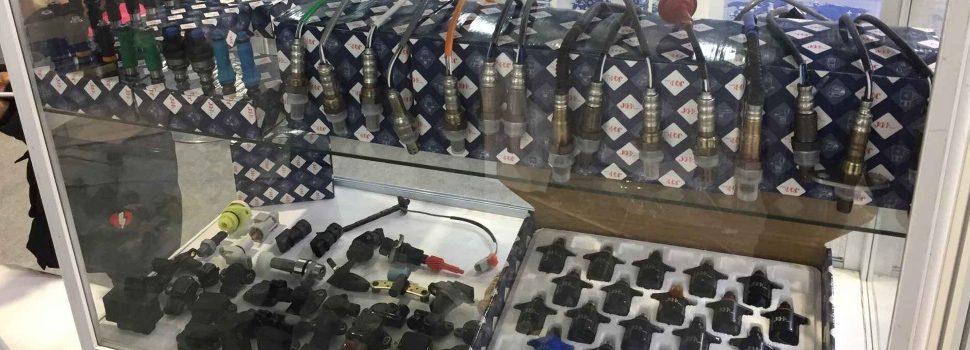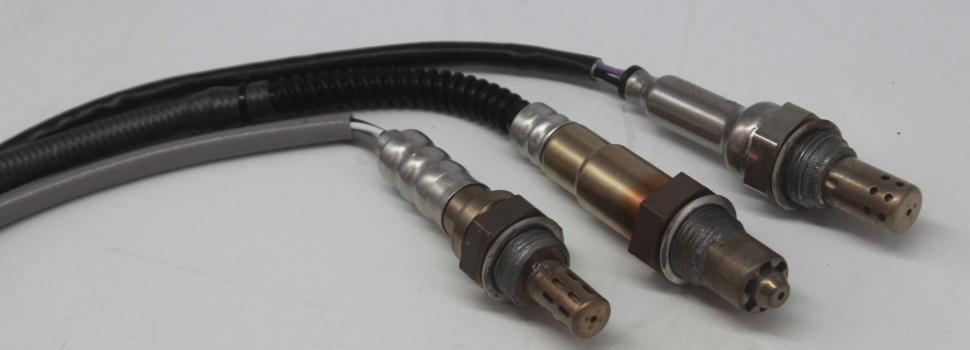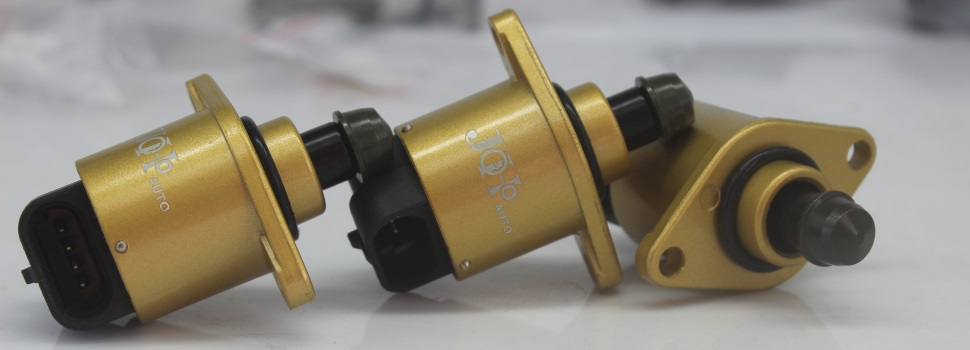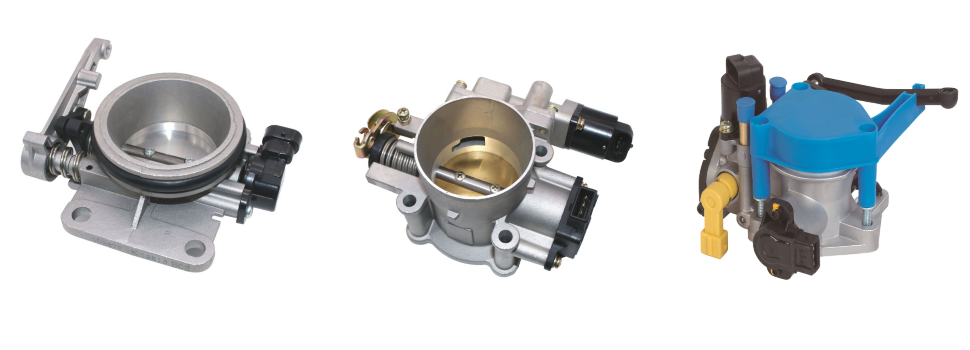Now look at it again with the 10x objective. Carry the microscope with both hands, one hand under the base, and the other on the arm. The nosepiece is rotated to the lowest-power objective i.e., 4x objective lens (objective lens with red band). Technique # 2. The next step was "to open the bosom of the Earth, and, by proper Application and Culture, to extort her hidden stores." The differing degrees of prosperity that existed among nations are considered largely a product of different levels of advancement in the state of learning, which allowed the more advanced nations to enjoy greater . As a result, the excited regions in turn emit light of a longer wavelength which makes it visible for observation. . 7. Complete the steps for a light microscope experiment seneca What are the steps for a light microscope experiment. Images observed under the light microscope are reversed and inverted. A microscope slide is placed into the stage; clip it onto the mechanical stage. 2021 Home Science Tools, All Rights Reserved |Privacy Policy |Terms & Conditions, Microscope Worksheet: Recording Your Microscope Observations. Or make simple slides out of household items, a project that works well for elementary age kids and can be used with both compound and stereo microscopes. Dehydration is less critical if the specimen is embedded in a water-soluble medium instead of in paraffin. Our mission is to provide an online platform to help students to share notes in Biology. The request process is simple and straightforward. This lets you learn about the individual parts and familiarize yourself with the different knobs, magnification settings, and objective lenses. Move the microscope condenser by means of the condenser rack and pinion knob until the top of the condenser is approximately the thickness of a piece of paper beneath the slide. Cut the onion into sections. complete the steps for a light microscope experiment seneca. When the microscope is not in use, cover it with a dust jacket. This produces impressively sharp images. The water should form a seal around the cork. The LibreTexts libraries arePowered by NICE CXone Expertand are supported by the Department of Education Open Textbook Pilot Project, the UC Davis Office of the Provost, the UC Davis Library, the California State University Affordable Learning Solutions Program, and Merlot. If you discover something interesting, perhaps an eye or part of a leg, look at it more closely with a higher power objective. What can you tell about the lenses of your microscope from this activity? What do you mean by permeability of membrane? She has conducted survey work for marine spatial planning projects in the Caribbean and provided research support as a graduate fellow for the Sustainable Fisheries Group. The cookie is set by GDPR cookie consent to record the user consent for the cookies in the category "Functional". Because of these features, you should only need to turn the fine focus knob slightly and perhaps move your slide a tiny bit to make sure it is centered and well focused under the new objective lens. 1. Click here to print out copies of the Microscope Observation worksheet! We should always start with 4x objective lens . In such laboratories, Microscope is of crucial importance and is commonly used in the lab practical. PDF Complete the steps for a light microscope experiment seneca Clean the lenses of the microscope with lens paper before and after using it. You also have the option to opt-out of these cookies. There are also some simple experiments that you can do . We'll look closely at controlled experiments in the next section. Questions Answered. TOS4. Then perform steps 7 and 8 one more time to obtain 4.5 PEM bilayers of PEM ((PLL/SPS) 4.5) where PLL forms the topmost layer. Occasionally you may have trouble with working your microscope. LIGHT. Excepting the microscope, most of the components were obtained online. /Subtype /Image Light Microscopy The light microscope, so called because it employs visible light to detect small objects, is probably the most well-known and well-used research tool in biology. 4. Early scientists often kept very detailed journals of the experiments they performed, making entries for each individual experiment and writing down virtually everything they saw. Manually adjust the metal clips until your slide is even. There are many homeschool science dissection kits that are available Get project ideas and special offers delivered to your inbox. Then switch to a higher power objective to see more detail. his body dissected, and his skull pulverised by an anatomist. Store microscope with the scanning objective in place and the stage in its lowest position. A microscope has a 20 X ocular (eyepiece) and two objectives . We use cookies to make wikiHow great. You may wish to use the ProtoSlo to keep your organisms from swimming too quickly! Use the corner of a paper towel to blot up any excess water at the edges of the coverslip. _________, Does it flip the image? 2.1 Slides and coverslips. Turn on the light source. Next, the embedded specimen is sliced into thin sections, usually a few (1-10) micrometers thick. 1 0 obj We also acknowledge previous National Science Foundation support under grant numbers 1246120, 1525057, and 1413739. Then, being careful not to move the cork around, lower the coverslip without trapping any air bubbles beneath it. Place one of your homemade slides on the center of the microscopes stage, directly over the clear hole. If you are interested in getting a close-up view of the world around you, a light microscope could be the right choice. Carry it with TWO HANDS to your table. Aims of the experiment To use a light microscope to examine animal or plant cells. Gently set a coverslip over the smear and scan your slide under low power to locate the cells, then observe them more closely under high power. Early exposure to such a tool and acquiring the skill of manipulating a microscope: Learning light microscopy and what it entails opens students perspectives to a whole new world of possibilities both academic and practical. Then turn the fine focus knob to get the image as sharp and clear as possible. Be careful to avoid light during the production and storage process. Note the orientation when viewed through the oculars. A microscope is an instrument that magnifies an object so that it may be seen by the observer. Many new microscope users find it difficult to conceive that the specimen on the slide is in three dimensions. With this project, you can make your own snowstorm in a flask using an adaptation from the lava lamp science experiment! Never touch the lens glass with your fingers, and always clean it with lens paper. Take one coverslip and hold it at an angle to the slide so that one edge of it touches the water droplet on the surface of the slide. These cookies help provide information on metrics the number of visitors, bounce rate, traffic source, etc. Level up your tech skills and stay ahead of the curve. Turn your microscope's light source on, lower the stage, and position the lowest power objective lens over the slide. Always carry a microscope upright, as the eyepiece could fall off. Explanation : A compound light microscope is the one which can magnify the objects in steps. A certain amount of incident light will be reflected from the specimen surface back through the objective lens system and then through a second lens system, the microscope eyepiece. If the specimen is too light or too dark, try adjusting the diaphragm. to use a light microscope to examine animal or plant cells to make observations and draw scale diagrams of cells Method Rotate the objective lenses so that the low power, eg x10, is in line. Often the first step in preparing the specimen is primary fixation, generally in a buffered aldehyde fixative. Focusing your eyes Preparing the Head Before putting a slide on the stage - turn on the illumination & set the light to a comfortable level. Putting the Microscope Away. Turn the nosepiece back to the lowest power lens, carefully remove the slide, and place a cover on your microscope. Light microscopes are smaller, easier to use, and less expensive than electron microscopes. Only half of my viewing field is lit, it looks like there's a half-moon in there! Advertisement cookies are used to provide visitors with relevant ads and marketing campaigns. Using the transfer pipette, transfer a drop of pond water onto a microscope slide. References. This image may not be used by other entities without the express written consent of wikiHow, Inc.
\n<\/p>
\n<\/p><\/div>"}, {"smallUrl":"https:\/\/www.wikihow.com\/images\/thumb\/5\/56\/Use-a-Light-Microscope-Step-10.jpg\/v4-460px-Use-a-Light-Microscope-Step-10.jpg","bigUrl":"\/images\/thumb\/5\/56\/Use-a-Light-Microscope-Step-10.jpg\/aid10502497-v4-728px-Use-a-Light-Microscope-Step-10.jpg","smallWidth":460,"smallHeight":345,"bigWidth":728,"bigHeight":546,"licensing":"
\u00a9 2023 wikiHow, Inc. All rights reserved. Does the lens of the microscope reverse the image? Ek=+2cosNC2kkk=0,1,2,,NC/2(evenN)=0,1,2,,(NC1)/2(oddN). It is the optical instrument that uses light and a series of lenses to magnify objects in steps; and can magnify an object up to 1500 times than its original size. Biological technicians whose tasks include preparing biological samples such as blood and bacteria cultures for laboratory analysis are required to have in-depth know-how of microscope usage. There are microscope cleaning kits you can purchase to make microscope cleaning safer and more adequate. 4. To keep the slide from drying out, you can make a seal of petroleum jelly around the coverslip with a toothpick. A tool called a microtome is extremely helpful for preparing specimens for slide mounting. 3. For this purpose, the specimen is embedded in a medium that will hold it rigidly in position while sections are cut. The pigmentation creates contrast which allows the viewer to see the image of the object being observed. /Width 625 /Length 8 0 R stream If you're using a low-power objective lens, you might need to decrease the light intensity or turn the condenser off. Refer to the table to answer the questions that follow. This cookie is set by GDPR Cookie Consent plugin. 4. This image may not be used by other entities without the express written consent of wikiHow, Inc.
\n<\/p>
\n<\/p><\/div>"}, {"smallUrl":"https:\/\/www.wikihow.com\/images\/thumb\/c\/c5\/Use-a-Light-Microscope-Step-3.jpg\/v4-460px-Use-a-Light-Microscope-Step-3.jpg","bigUrl":"\/images\/thumb\/c\/c5\/Use-a-Light-Microscope-Step-3.jpg\/aid10502497-v4-728px-Use-a-Light-Microscope-Step-3.jpg","smallWidth":460,"smallHeight":345,"bigWidth":728,"bigHeight":546,"licensing":"
\u00a9 2023 wikiHow, Inc. All rights reserved. Confocal microscopy is regarded as a superior imaging technique that produces high-resolution, high-contrast images. With these directions, you can get started right away making your own microscope slides! Yet, many students and teachers are unaware of the full range of features that are available in light microscopes. Then wipe that part of the toothpick in the center of your slide. d. Repeat steps 2 and 3 with the remaining objectives. 2. Our custom rehearsal service comes as a reliably solution on your academic journey whenever deadlines seem to reach too early. /CA 1.0 A controlled experiment is a scientific test done under controlled conditions, meaning that just one (or a few) factors are changed at a time, while all others are kept constant. Grasp the arm with one hand and place the other hand under the base for support. This conventional technique is most suitable for observing the natural colors of the specimen. This article has been viewed 112,267 times. 1: fundamentals of science. Microbiology, Microscopy, Sample Preparation Techniques in Light Microscopy. -#ij{Fa@BNG$ oUGB3m?x9WP;w9Udey]_>i /zo*s dtn+H,Krs`;u8rg|>+%)6G2>lnwsw^$9qI.ml`@m{ <8nTx . 2. (c) Calculate and compare the delocalization energies of cyclooctaene and octatetraene. Students will learn the proper use and care of the microscope and observe samples from pond water. Choose one to focus on and center it in your visual field. What are the advantages of a light microscope? This image may not be used by other entities without the express written consent of wikiHow, Inc.
\n<\/p>
\n<\/p><\/div>"}, {"smallUrl":"https:\/\/www.wikihow.com\/images\/thumb\/2\/21\/Use-a-Light-Microscope-Step-7.jpg\/v4-460px-Use-a-Light-Microscope-Step-7.jpg","bigUrl":"\/images\/thumb\/2\/21\/Use-a-Light-Microscope-Step-7.jpg\/aid10502497-v4-728px-Use-a-Light-Microscope-Step-7.jpg","smallWidth":460,"smallHeight":345,"bigWidth":728,"bigHeight":546,"licensing":"
\u00a9 2023 wikiHow, Inc. All rights reserved. Preparation often involves nothing more than mounting a small piece of the specimen in a suitable liquid on a glass slide and covering it with a glass coverslip. This paper. Springer. Using a light microscope Once slides have been prepared, they can be examined under a microscope. Sometimes the tissue is treated with a single stain, but more often a series of stains is used, each with an affinity for a different kind of cellular component. This image is not<\/b> licensed under the Creative Commons license applied to text content and some other images posted to the wikiHow website. The world, as seen by the naked eye, is an interesting place in and of itself. Phase-contrast microscopy employs special phase-contrast objectives and condensers to take advantage of refractive index variations. Remaining fixed films (n = 2), after rinsing with PBS, underwent dehydration steps of 25-50-70-85-95-100% ethanol, 15 min per step. 5) c.What form of exercise would use up the cheeseburger's calories in the shortest amount of time? Explain your answer. wide selection that can fit your science goals and budget. A microscope works by passing light through 2 or more lenses, which bend the light rays in order to make them appear larger. Can be used as a distance based learning tool during local covid lockdown and in classes where practicals are on-hold due to coronavirus. Lab report on the microscope Free Essays | Studymode, Observing Onion Cells Under The Microscope, Compound Light Microscope: study guides and answers on Quizlet, Compound Microscope: Definition, Diagram, Parts, Uses, Working - BYJUS, Story Lab: Microscopes and the Letter "E", How to use a Microscope - Microscopes 4 Schools, The Light Sheet Microscopy Principle - ZEISS, Microscope observation of animal and plant cells - PaperAp.com, Onion Cell Microscope Slide Experiment - YouTube, Microscope LED Light Source - LED Illuminators | CoolLED. Explain why the specimen must be centered in the field of view on low power before going to high power. 2. The purpose of staining is to give distinctive colour characteristics to different kinds of cellular components. It is so-called because it employs the use of white or visible light to illuminate the object of interest so it can be magnified and viewed through one or a series of lenses. Aim: The aim of this investigation is to identify the cells within an onion skin using a light microscope. Since paraffin is insoluble in water, any water in the specimen must first be removed (by dehydration in alcohol, usually) and replaced by an organic solvent such as xylene, in which paraffin is soluble. endobj Small insects such as gnats, ants, or fruit flies are interesting to observe with a microscope as well. /ColorSpace /DeviceRGB Performance cookies are used to understand and analyze the key performance indexes of the website which helps in delivering a better user experience for the visitors. Most compound microscopes are parcentered and parfocal. All structures are labeled correctly Able to identify at least 10 parts of the microscope Post-analytical phase FACTOR 7 Did not return (Returning of the microscope) microscope. 5. k & =0, \pm 1, \pm 2, \ldots, \pm\left(N_{\mathrm{C}}-1\right) / 2(\text { odd } N) Mark the following statement as true or false. Learn more about using your compound microscope by making simple slides using common items from around the house! Explain with suitable example. %PDF-1.4 Compound Microscopes. /BitsPerComponent 8 This image may not be used by other entities without the express written consent of wikiHow, Inc.
\n<\/p>
\n<\/p><\/div>"}, {"smallUrl":"https:\/\/www.wikihow.com\/images\/thumb\/a\/aa\/Use-a-Light-Microscope-Step-4.jpg\/v4-460px-Use-a-Light-Microscope-Step-4.jpg","bigUrl":"\/images\/thumb\/a\/aa\/Use-a-Light-Microscope-Step-4.jpg\/aid10502497-v4-728px-Use-a-Light-Microscope-Step-4.jpg","smallWidth":460,"smallHeight":345,"bigWidth":728,"bigHeight":546,"licensing":"
\u00a9 2023 wikiHow, Inc. All rights reserved. What is a trophic hormone? Any cell counting procedure includes three steps: 1. dilution of the blood 2. sampling of the diluted suspension into a measured volume 3. and counting of the cells in that volume A. Today, microscopes are notoriously used across many modern human industries. 1. By focusing light on their lenses, they allow you to examine the smallest cellular constructs that make up the specimens. Get your microscope out of the cabinet in the lab. These cookies track visitors across websites and collect information to provide customized ads. (a) Calculate the energies of the \pi molecular orbitals of benzene and cyclooctatetraene. << e. Note that if you are using a microscope with a rotating stage that is not a polarizing light microscope, your objectives will not be centerable. Basic Flower Morphology: Examination of an insect-pollinated flower 3. While using the microscope, do not rush through the viewing process. Plug your microscope into the power supply and switch on the illuminator. Determine which thread is on the bottom, middle, and top of the slide. For monocyclic conjugated polyenes (such as cyclobutadiene and benzene) with each of NNN carbon atoms contributing an electron in a 2p2 \mathrm{p}2p orbital, simple Hckel theory gives the following expression for the energies EkE_kEk of the resulting \pi molecular orbitals: Ek=+2cos2kNCk=0,1,2,,NC/2(evenN)k=0,1,2,,(NC1)/2(oddN)\begin{aligned} Use this same wet mount method for the other cell specimens listed below. Follow the step-by-step instructions below for a experiment that kids of all ages will remember. One of the most attractive features of light microscopy is the ease with which most specimens can be prepared for examination. How many micrometers is the diameter? A light microscope is an optical instrument used to view objects too small to with the naked eye. Use the coarse knob to refocus and move the mechanical stage to re-center your image. Its a perfect project for any winter day. What does the e look like? Be gentle as you rotate the nosepiece to avoid breaking it or wearing it down. wikiHow, Inc. is the copyright holder of this image under U.S. and international copyright laws. Step 3 Place a coverslip on top of the tissue and place the slide onto the microscope stage. This image may not be used by other entities without the express written consent of wikiHow, Inc.
\n<\/p>
\n<\/p><\/div>"}. A complete list of reagents and equipment can be found in the . Lab 1 Exercises 1. The cookie is set by the GDPR Cookie Consent plugin and is used to store whether or not user has consented to the use of cookies. Fun & Easy Science Activities Your Kids Will Love! 1 1 . (upside down) _________. The slide is then positioned on the specimen stage of the microscope and examined through the ocular lens, or with a camera. Because cells are usually too small to see with the naked eye, a microscope is an essential tool in the field of biology. serves as preparatory training for a future career in the sciences or related fields; helps them engage in their own scientific investigations; and. If you can't focus the image properly, readjust the focus knob until the objective lens hovers over the image. We have a variety of microscope prepared slides available both individually and in sets, such as our Biology Slide Set. This image is not<\/b> licensed under the Creative Commons license applied to text content and some other images posted to the wikiHow website. 2. 6. Preparation of Specimens for Microscopic Examination, Preparation of Different Stains | Microscopy, Sample Preparation Techniques in Light Microscopy, Mechanisms of Genetic Variation | Evolution | Species | Biology. This image may not be used by other entities without the express written consent of wikiHow, Inc.
\n<\/p>
\n<\/p><\/div>"}, {"smallUrl":"https:\/\/www.wikihow.com\/images\/thumb\/e\/e8\/Use-a-Light-Microscope-Step-6.jpg\/v4-460px-Use-a-Light-Microscope-Step-6.jpg","bigUrl":"\/images\/thumb\/e\/e8\/Use-a-Light-Microscope-Step-6.jpg\/aid10502497-v4-728px-Use-a-Light-Microscope-Step-6.jpg","smallWidth":460,"smallHeight":345,"bigWidth":728,"bigHeight":546,"licensing":"
\u00a9 2023 wikiHow, Inc. All rights reserved. answer choices 10 200 1,000 2,000 Question 12 30 seconds Q. Technique # 1. Because of the shorter wavelengths of UV light (180-400 nm), the image produced is clearer and more distinct at a magnification approximately double what is achieved by using only visible light (400-700 nm). Always follow these general instructions when using a microscope. A common issue in viewing biological specimens via conventional light microscopy is glare captured from multiple focal planes producing light noise that can distort the image, especially if the specimen is thicker than the plane of focus. (b) Calculate and compare the delocalization energies of benzene (using the expression above) and hexatriene (see Problem 10.11a). Accessibility StatementFor more information contact us atinfo@libretexts.orgor check out our status page at https://status.libretexts.org. This cookie is set by GDPR Cookie Consent plugin. E_k=\alpha+2 \beta \cos \frac{2 k \pi}{N_{\mathrm{C}}} & k=0, \pm 1, \pm 2, \ldots, \pm N_{\mathrm{C}} / 2(\text { even } N) \\ Step 2 Add a few drops of suitable stain/dye (e.g iodine.) Accessed April 24, 2020. https://micro.magnet.fsu.edu/primer/anatomy/cleaning.html, https://link.springer.com/article/10.1007/s13632-012-0059-z, https://cmrf.research.uiowa.edu/light-microscopy, https://www.sciencedirect.com/topics/materials-science/fluorescence-microscopy, https://www.ruf.rice.edu/~bioslabs/methods/microscopy/microscopy.html, https://micro.magnet.fsu.edu/primer/anatomy/cleaning.html. /Height 155 Snowstorm in a Boiling Flask Density Project, Weekly Lesson Plan Sheet for Homeschool Science, a fresh leaf specimen (use one without many holes or blemishes), a few granules of salt, sugar, ground coffee, sand, or any other grainy material.





